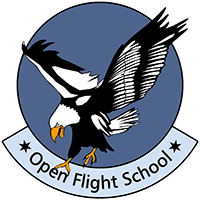Main Glossar
Special | A | B | C | D | E | F | G | H | I | J | K | L | M | N | O | P | Q | R | S | T | U | V | W | X | Y | Z | ALL
B |
|---|
BARCAP | |||
|---|---|---|---|
Mission type Barrier Combat Air Patrol: Protect a lane from enemy penetration. | |||
Basic-T | |||
|---|---|---|---|
Basic flight instruments: Airspeed indicator, artificial horizon, altimeter and gyro. In most cockpits organized in form of a "T". | |||
Bingo | |||
|---|---|---|---|
Bingo Fuel The fuel required to fly directly back to base in a straight line. | |||
BUCS | |||
|---|---|---|---|
(AH-64D Apache) Back-Up Control System Normally, the pilot and CPG flight controls are mechanically linked. The mechanical linkages are protected by shear pins and mis-track sensors to prevent a control jam or severance from affecting both sets of flight controls. If the flight controls are decoupled by the shear pin, or a mis-track is otherwise sensed, the Back-Up Control System is automatically activated. The BUCS is a single-channel, four-axis, non-redundant electric fly-by-wire (FBW) system. The FBW system is designed to replicate the feel of the hydromechanical controls but does not replicate SCAS functionality. BUCS can only be active for the pilot or the CPG station. Either the pilot or the CPG can transfer BUCS control to their station if necessary, depending on the nature and location of the jam or severance within the flight controls. | |||
Bullseye | |||
|---|---|---|---|
Das Bullseye ist ein vordefinierter Punkt, der als Referenz für Funkrufe zur Angabe einer Position verwendet wird. Wenn beispielsweise jemand sagt, dass er einen Radarkontakt bei "Bullseye 050 at 30 miles" hat, ist der Radarkontakt 30 Meilen vom Bullseye-Punkt bei einem Kurs von 050 (etwa Nordosten) entfernt. Bully wird verwendet, wenn der Funkverkehr vom Feind abgehört werden kann. Da der Bullseye-Punkt vor dem Flug vereinbart und nicht über Funk angegeben wird, kann der Feind bei Verwendung der Bullseye-Terminologie nicht feststellen, auf welchen Punkt sie sich beziehen. Darüber hinaus trägt die Verwendung von Bullseye-Koordinaten zur Verbesserung des Situationsbewusstseins bei, da es sich um einen absoluten Bezugsrahmen handelt. Wenn AWACS einem anderen Flugzeug mitteilt, dass es bei "3 Uhr, 25 Meilen" feindliche Jäger hat, hat er keine Ahnung, wo sie sich befinden. Wenn man jedoch sagt, dass sich die Jäger bei "Bullseye 120 bei 100 Meilen" befinden, weiß man genau, wo sie sich befinden. Quelle: Falconpedia | |||
